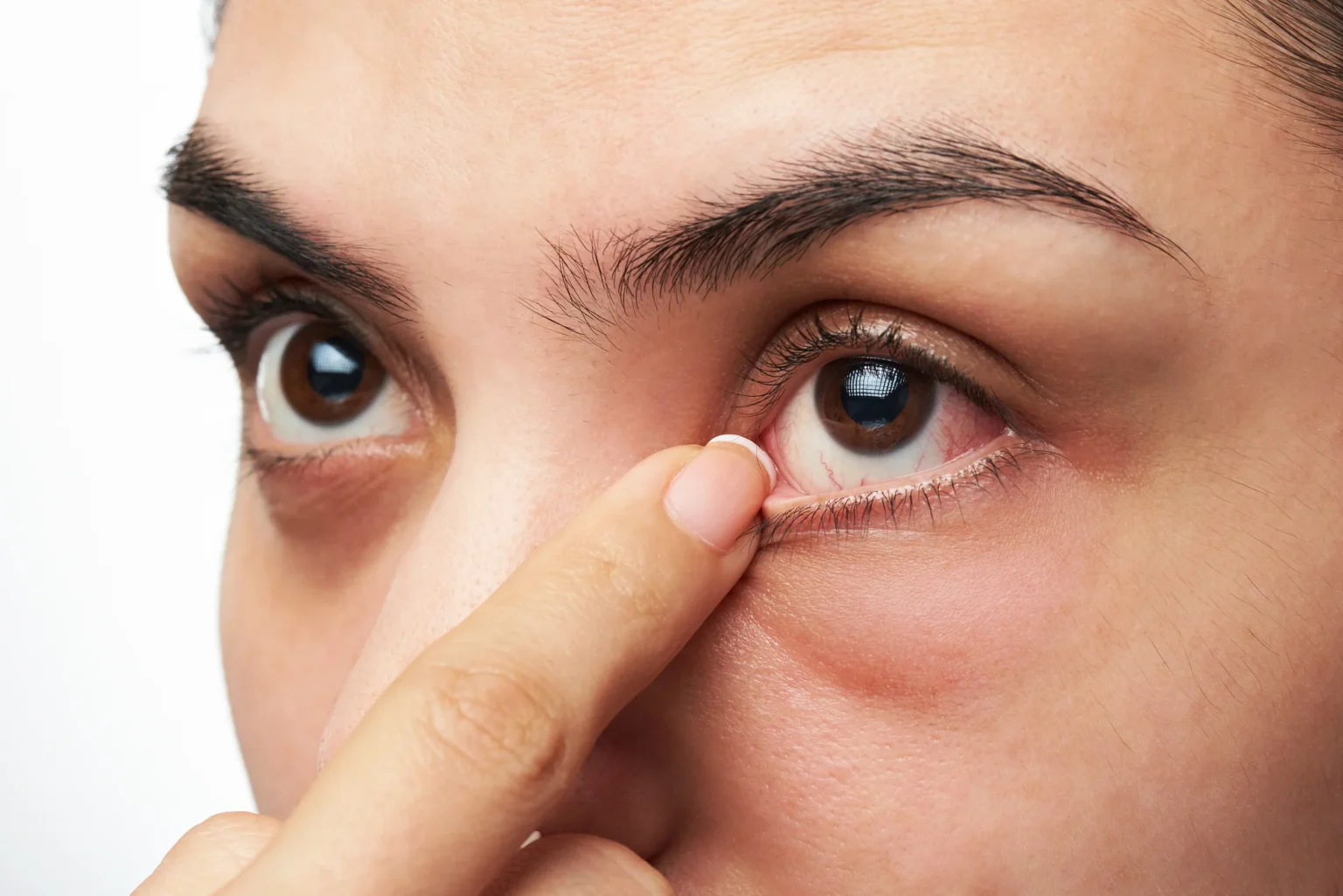Our eyes are one of the most vital and sensitive organs, allowing us to experience the world visually. However, like any other part of the body, the eyes are vulnerable to various conditions that can impact vision and overall eye health. While some eye issues are minor and temporary, others can lead to long-term complications if left untreated. The good news? Most common eye conditions can be managed—or even prevented—with the right care and habits.
This article explores the most prevalent eye conditions and offers practical tips on how to protect your vision.
1. Refractive Errors
What Are They?
Refractive errors occur when the shape of the eye prevents light from focusing properly on the retina. The most common types include:
- Myopia (nearsightedness) – Difficulty seeing distant objects
- Hyperopia (farsightedness) – Difficulty seeing close objects
- Astigmatism – Blurred or distorted vision due to irregular cornea shape
- Presbyopia – Age-related loss of near vision, typically after age 40
Prevention & Management:
- Get regular eye exams to detect changes in vision early
- Use corrective lenses or consider laser surgery if needed
- Minimize eye strain with proper lighting and screen breaks
- Maintain a healthy diet rich in vitamins A and C, omega-3 fatty acids, and zinc
2. Dry Eye Syndrome
What Is It?
Dry eyes occur when your tear glands don’t produce enough tears or produce poor-quality tears. It leads to burning, itching, redness, and a gritty sensation.
Prevention & Management:
- Blink regularly, especially when using digital screens
- Use a humidifier to add moisture to the air
- Avoid smoking and secondhand smoke
- Use artificial tears or prescribed eye drops
- Stay hydrated by drinking plenty of water
3. Conjunctivitis (Pink Eye)
What Is It?
Conjunctivitis is an inflammation or infection of the conjunctiva, the membrane covering the white part of the eye. It can be viral, bacterial, or allergic.
Prevention & Management:
- Wash hands frequently and avoid touching your eyes
- Avoid sharing towels, eye makeup, or contact lenses
- Use prescribed drops for bacterial infections
- Manage allergies with antihistamines if allergic conjunctivitis is the cause
- Clean and replace contact lenses as directed
4. Glaucoma
What Is It?
Glaucoma is a group of eye diseases that damage the optic nerve, often caused by increased pressure in the eye. It can lead to irreversible vision loss if untreated.
Prevention & Management:
- Regular comprehensive eye exams, especially after age 40
- Control blood pressure and maintain a healthy weight
- Use prescribed glaucoma medications consistently
- Avoid prolonged use of corticosteroids unless prescribed
5. Cataracts
What Are They?
Cataracts are clouding of the eye’s lens, leading to blurry vision and difficulty with night vision. They typically develop with aging.
Prevention & Management:
- Wear sunglasses with UV protection
- Eat a diet rich in antioxidants (leafy greens, citrus, carrots)
- Avoid smoking and excessive alcohol consumption
- Manage underlying conditions like diabetes
- Cataract surgery is safe and effective for restoring vision
6. Age-Related Macular Degeneration (AMD)
What Is It?
AMD affects the macula—the central part of the retina—resulting in loss of central vision. It’s a leading cause of blindness in people over 60.
Prevention & Management:
- Don’t smoke—smoking doubles the risk of AMD
- Eat foods high in lutein and zeaxanthin (kale, spinach, corn)
- Take AREDS (Age-Related Eye Disease Study) supplements if recommended
- Get regular eye exams for early detection
7. Diabetic Retinopathy
What Is It?
This condition occurs in people with diabetes when high blood sugar damages the blood vessels in the retina, potentially leading to blindness.
Prevention & Management:
- Keep blood sugar, cholesterol, and blood pressure under control
- Have annual dilated eye exams
- Follow your diabetes treatment plan strictly
- Laser treatments and injections can help manage advanced cases
8. Eye Strain (Digital Eye Strain/Computer Vision Syndrome)
What Is It?
Eye strain results from prolonged screen time, causing discomfort, blurred vision, and headaches.
Prevention & Management:
- Follow the 20-20-20 rule: Every 20 minutes, look at something 20 feet away for 20 seconds
- Adjust screen brightness and contrast
- Ensure ergonomic posture and eye-level screens
- Use blue light filtering glasses or screen filters
Tips to Maintain Overall Eye Health
- Get regular eye exams even if you don’t wear glasses
- Protect your eyes with sunglasses and safety goggles when necessary
- Quit smoking – it increases the risk of cataracts, AMD, and optic nerve damage
- Stay active – exercise improves blood circulation, which benefits eye health
- Manage chronic diseases – such as hypertension and diabetes, which can impact vision
- Eat for your eyes – include foods rich in vitamins A, C, E, zinc, and omega-3s
When to See an Eye Doctor
Contact your eye care provider if you experience:
- Sudden vision loss
- Persistent eye pain or redness
- Flashes of light or floaters
- Double vision
- Eye injury or trauma
Early detection can prevent complications and preserve your sight.
FAQs About Eye Health and Prevention
1. How often should I get an eye exam?
Every 1–2 years for adults, or more frequently if you have vision issues or risk factors.
2. Can screen time permanently damage my eyes?
Prolonged screen use can cause strain but not permanent damage. Proper breaks help prevent discomfort.
3. Are over-the-counter eye drops safe?
Yes, for occasional dryness. But long-term use or red-eye drops should be discussed with a doctor.
4. Can diet improve eye health?
Yes. Nutrient-rich foods support vision and may reduce the risk of conditions like AMD and cataracts.
5. Is it safe to wear contact lenses every day?
Yes, if used as directed. Always clean them properly and never sleep in them unless approved.
6. What causes floaters in my vision?
They’re usually harmless but should be checked if sudden or accompanied by light flashes.
7. Can stress affect my vision?
Yes. Stress can cause eye twitching, strain, and blurred vision in some cases.
8. At what age should children have their first eye exam?
By age 1, and again before school (around age 3–5), then regularly thereafter.
Final Thoughts
Caring for your eyes is an essential part of your overall health. By recognizing common eye conditions and taking proactive steps to prevent them, you can safeguard your vision for years to come. Small changes in your daily habits—like eating well, taking screen breaks, and attending regular eye exams—can make a big difference. Your eyes work hard for you—give them the care they deserve.










